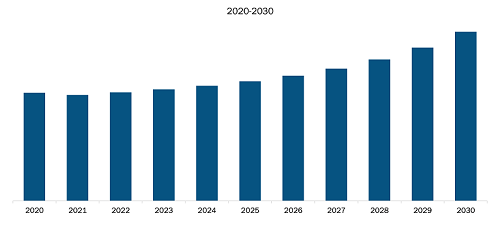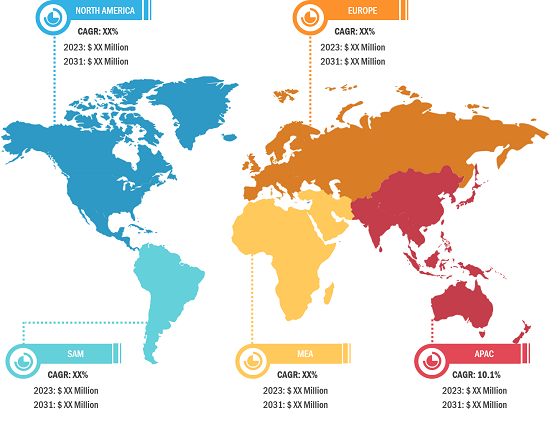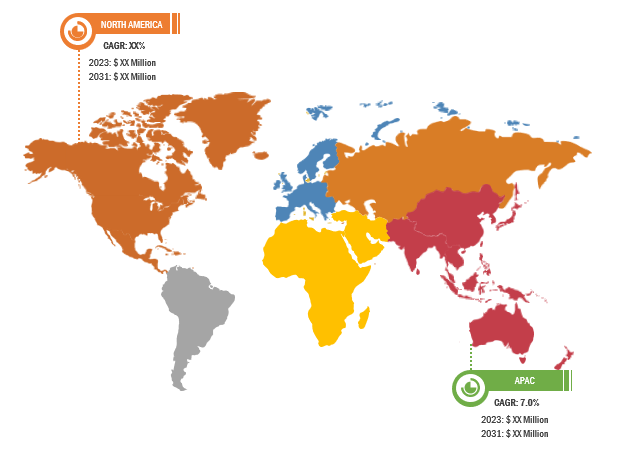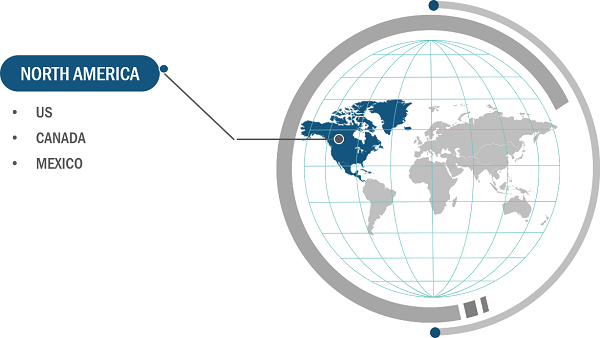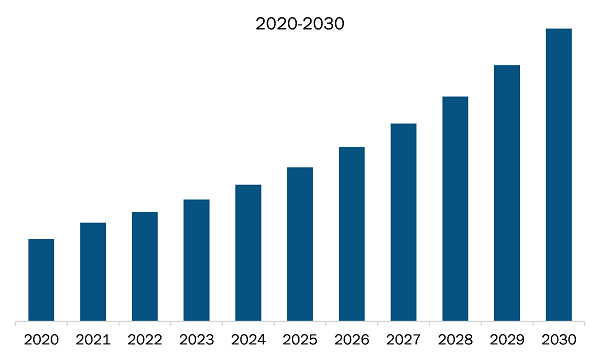
Increasing Focus on Environmentally Friendly Data Centers to Fuel Asia Pacific Micro Data Center Market Growth During Forecast Period
Businesses are focusing on reducing their carbon footprint. As digital consumption increases, the need for data storage is also growing, resulting in a rise in company’s environmental responsibilities. Server rooms that store data occupy valuable space, such as a single room or an entire floor (or more) in an office block, which can be expensive. With the rising need for data storage, the requirement for real estate space also increases. Cooling the server rooms is one of the greatest environmental challenges faced by businesses. Storing data generates a lot of heat. Hence, server rooms must be kept in the range of 18–27°C, with a relative humidity between 45% and 50%. Micro data centers are compact equipment for storing enormous amounts of data. A micro data center is the size of a small refrigerator with its own power and cooling features. It offers several environmental advantages, such as storage satisfies the increasing need for edge computing capabilities and dramatically reduce energy requirements. Companies that have switched to micro data centers in 2021 have reported power savings of up to 70%, according to Vertiv Group Corp. Micro data centers can be placed in meeting rooms, board rooms, reception areas, or other small spaces. Server rooms typically emit 75–95Db of noise, and a micro data center emits ~35Db of noise. In addition, storage in a micro data center can easily be increased when needed. This negates the requirement for a large outlay during the initial stages of a business, with minimal downtime when there is a need to add future storage. From energy savings to reduced latency, micro data centers are specifically designed for companies that are more focused on environmentally friendly solutions. For instance, in September 2021, Zella DC, an Australian micro data center firm, launched an environmentally friendly micro data center. Therefore, the demand for micro data centers is increasing with the increasing focus on environmentally friendly data centers, which is expected to boost the Asia Pacific micro data center market growth.

Asia Pacific Micro Data Center Market: Industry Overview
The Asia Pacific micro data center market is segmented on the basis of rack type, organization size, and end user. Based on rack type, the Asia Pacific micro data center market is bifurcated into single rack and multi rack. By organization size, the Asia Pacific micro data center market is bifurcated into SMEs and large enterprises. Based on end users, the Asia Pacific micro data center market is segmented into BFSI, retail, IT & telecom, manufacturing, healthcare, and others. Based on country, the Asia Pacific micro data center market is segmented into Australia, Indonesia, New Zealand, Singapore, Thailand, Vietnam, the Philippines, Bangladesh, Sri Lanka, and the Rest of Asia Pacific.
Countries such as India, China, Japan, South Korea, India and others in the Asia Pacific micro data center market have embraced digital transformation across various sectors, including government services, finance, healthcare, and education. This digitalization drive has led to increased data generation and the need for efficient data processing and storage solutions. Micro data centers provide a cost-effective option for organizations looking to establish localized data centers and support their digital initiatives. The adoption of edge computing is picking up in all these countries. Edge computing enables real-time data processing and analysis at the network edge, reducing latency and improving performance for latency-sensitive applications. Micro data centers play a crucial role in supporting edge computing infrastructure by bringing compute resources closer to the point of data generation. Further, these countries are making huge progress in IoT and smart city initiatives, which rely on robust data processing capabilities. With the growth of IoT devices and the need for real-time analytics, micro data centers can cater to the localized data requirements of IoT deployments and smart city applications. As digital and technological transformation is increasing in these countries, various companies are launching new micro data centers to meet the increasing demand, contributing to the Asia Pacific micro data center market growth.
Asia Pacific Micro Data Center Market: Competitive Landscape and Key Developments
Eaton; Hewlett Packard Enterprise Development LP; Hitachi, Ltd.; Rittal GmbH and Co. KG; Legrand SA; Zella DC; HIRO micro data centers; Schneider Electric; Delta Power Solutions; and Vertiv Group Corp are among the leading Asia Pacific micro data center market players profiled in the Asia Pacific micro data center market report. Several other essential micro data center companies were analyzed for a holistic view of the market and its ecosystem. The report provides detailed market insights, which help the key players strategize their market growth. A few developments in the Asia Pacific micro data center market are mentioned below:
- In November 2022, Rittal RiMatrix launched new Micro Data Centers, which are compact, powerful, and fully-fledged homes for IT hardware. Rittal RiMatrix Micro Data Centers with components such as rack, power, cooling, monitoring, and security, ensures that the IT is securely packaged and operate with the smallest carbon emissions. Moreover, the combination of global standardization and adaptability means that these new packages make even better use of their advantages.
- In March 2021, Rittal, the provider of industrial enclosures and IT infrastructure, and Stulz, the leading specialist for data center cooling systems, entered into a global partnership to offer customers end-to-end, tailored solutions to their needs.


